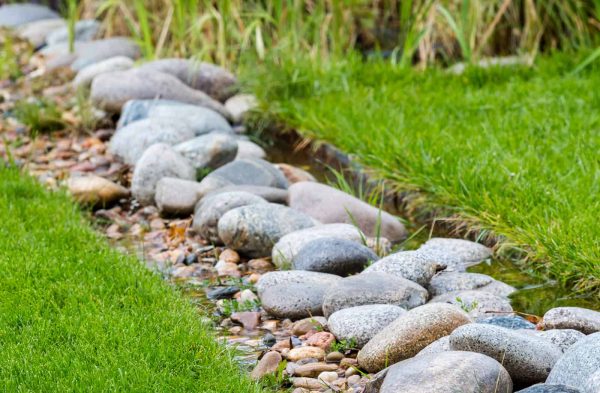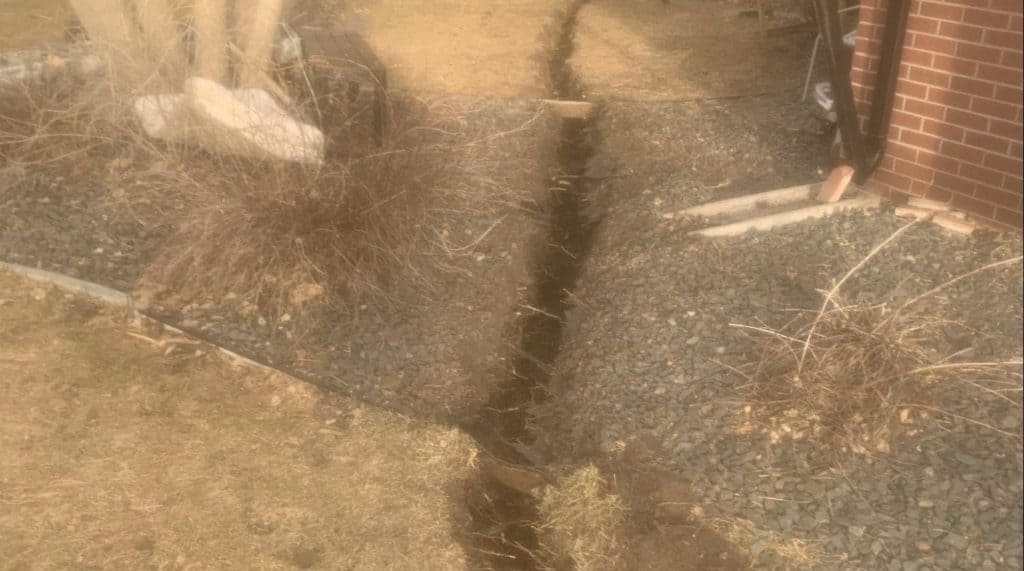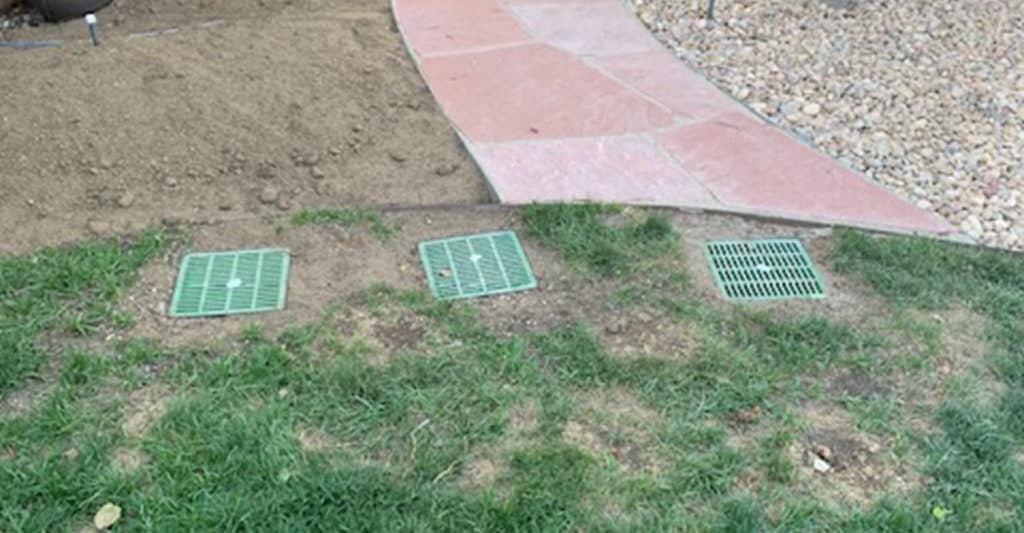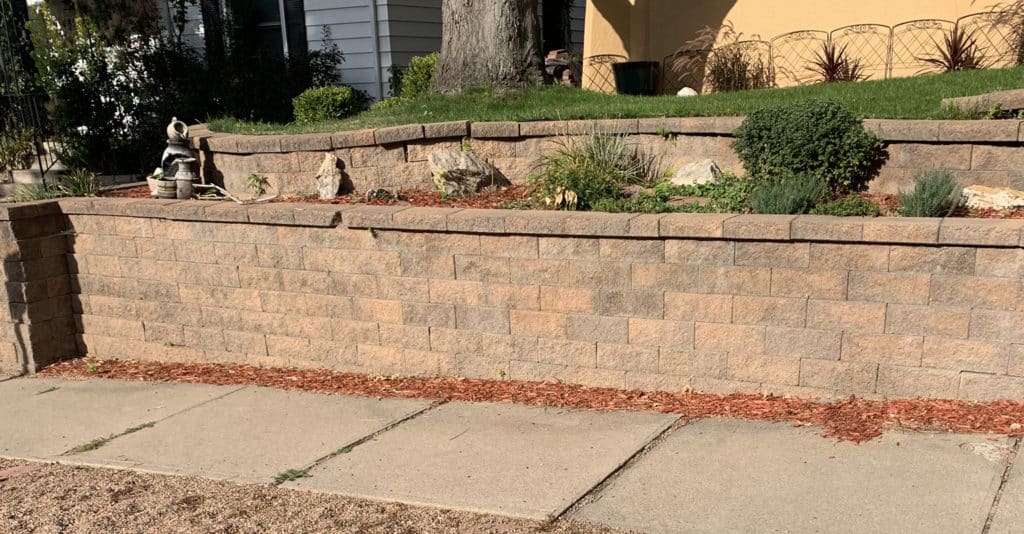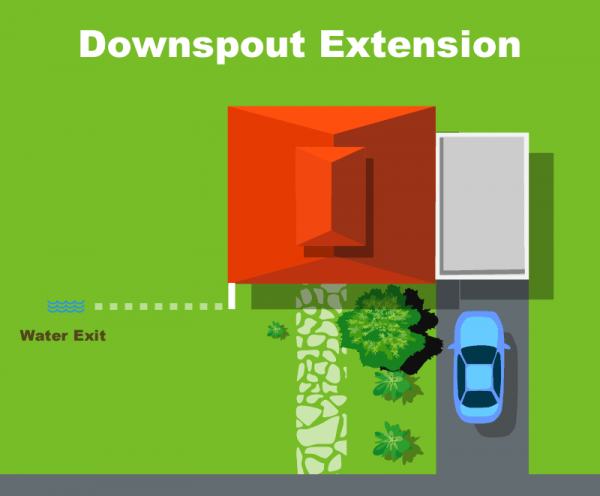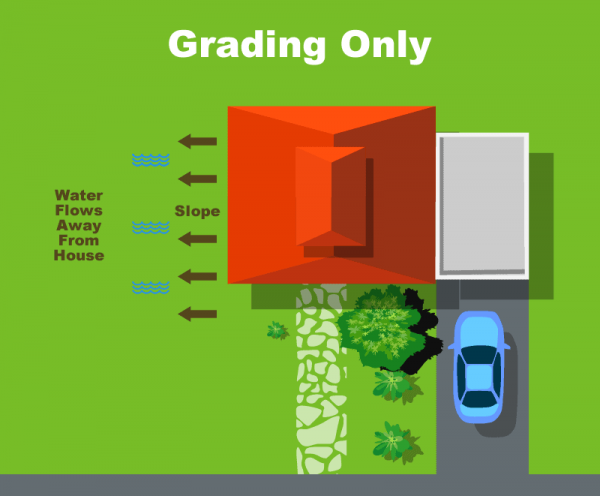French Drains in Denver Metro
Keep Your Property Safe – Channel Water Away from Your Foundation
Drainage Options to Protect Your Home
While Colorado's front range typically has a dry climate, we do have a lot of snow melt and heavy spring and summer rainfall. French drains are an ideal solution to keep all this moisture away from your home, out of your basement, and safely direct it away from your property.
Denver, CO
- Water leaking into your basement or crawl space
- Water is pooling up against your house after rainfall or snow melt
- Your yard slopes inward and directs water towards your house
- You have a sinkhole in the middle of your yard which creates a swampy, wet area
- Downspouts are funneling water right next to your house – where it can find its way into your basement
Even if you didn’t have these problems when you moved in to your home, these problems can appear over time as soil settles and erosion occurs in your yard.
French Drain Install in a Back Yard (hover over "+" icons to learn more)
Drainage Systems to Protect Your Home
1. French Drain System
French Drain Install in a Back Yard (hover over "+" icons to learn more)
What is a French Drain?
A french drain involves installing a hidden drainage pipe at the low point between two slopes: the already existing slope of the yard towards your home, and the slope (that we build for you) from your house towards your yard. The french drain pipe slopes slightly in one direction towards an exit point so that water is safely channeled away from your home.
Steps involved in creating a French Drain
1) Create a Trench for the Drainage System a Good Distance Away from the Home
2) Install the French Drain Pipe
Pea gravel is laid down and a 4 inch diameter flex pipe perforated with holes is inserted into the trench. This pipe has a fabric “sock” around it. The holes allow water to come in, and the fabric “sock” prevents dirt and other materials from seeping into the french drain pipe and causing clogging issues. Since the pipe follows the gentle gradient of the trench, it will slope gradually downward towards the exit point. When water is in the pipe, gravity will drive that water from the house towards a safe exit point where the water can’t do any damage.
3) Surround the Pipe and Bury it
4) Build a Slope Next to Your Home
2. Downspout Extension Solution
Downspout Extension Install in a Back Yard (hover over "+" icons to learn more)
The Downspout Extension Solution
To properly deal with this issue, we will use a solid 3″ flex pipe. The flex pipe will be attached to your downspout buried under your yard. The exit to the pipe will be on your property where there is a positive slope away from your house. This will safely keep all the roof runoff away from your home.
3. Grading Only Solution
Grading to Prevent Water Damage in a Back Yard (hover over "+" icons to learn more)
A grading solution is preferable when possible as this is the least expensive option. It works best for minor drainage issues.
4. Catch Drain Solution
Using a Catch Drain in a Back Yard (hover over "+" icons to learn more)
Which Drainage Systems Will Work Best for Me?
In many cases, a french drain would be the best method to divert water from your home and and prevent structural and property damage.
My promise to you is that I will actively work to find you the best solution to your drainage issue in keeping in mind cost and effectiveness. I have overruled french drain recommendations made by contractors when I thought a installing one would be overkill. I will find the best solution for you.
FAQ
Will my existing landscaping need to be removed / relocated to accommodate a french drain?
In some cases, yes, your existing landscaping may need to be removed or relocated. We have to make sure that the french drain is located a good distance away from the house, and that sometimes necessitates moving existing landscaping.
We can easily move rocks or wood chips, and it is possible to replant some items like shrubs. However, while we are french drain specialists, we are also a full service landscaping company. We will ensure that your french drain is functional and your yard looks great when we’re through.
Do I need more than 1 french drain?
Usually 1 french drain is required for each side of your yard that drains significantly inward towards your house. In extreme cases, you may need two or more drains in parallel. It is rare to need drainage systems in parallel, but it does become necessary in severe cases on long, steep slopes that collect a lot of rainfall.
Does a French Drain Require a Pump or Electricity?
No. The french drain uses gravity to gently steer water away from your house into an area where it won’t cause any problems.
Do I still need a sump pump with a French Drain?
A sump pump isn’t required if you have a french drain. We still recommend a sump pump for most homes in Denver metro. The pump provides an additional level of protection to move water off your property.
Can I Do a DIY Drain System Install?
This isn’t recommended. Installing a french drain is fairly backbreaking work that requires specialized equipment to get it done right. You have to make sure that your solutions is properly graded and that you’re using the right materials that will hold up for the long haul.
You’ll also want to dig the trench in a manner that will allow you to easily preserve the existing turf and reinstall it on top of the pipe after the french drain has been installed.
There is a learning curve involved that may prove to be extremely frustrating. As with most tasks, leaving it to the experts is the most efficient way to get a properly functioning french drain without the hassle.
French Drain Exit Point - Where Should it Be?
The french drain exit point will be where the pipe for the french drain ends. The keys in selecting and designing a french drain exit point are:
Slope – The exit point should be at the bottom of the slope of the french drain. The slope between the drain and exit point must be graded properly.
Erosion – There may be a lot of water coming at a high rate of speed coming out of the exit point. For that reason, you’ll want to have an erosion resistant landscaping strategy at the exit point. Rocks tend to work well to mitigate the effects of rushing water.
Hazard Considerations – The french drain exit point should be away from locations where it can cause damage to your property or adjacent properties. The flow of water should also not be in a place where it can cause erosion or other safety concerns.
Pipeless French Drains - What are They?
Not surprisingly, pipeless french drains are a drainage system that whisks water away without the use of a pipe. First, you must find an area that is properly graded so that the slope is able to channel water away from where you don’t want it (like a home’s foundation).
The next step is to dig a trench for the pipeless french drain. Water will pass through this trench to an exit point that is far away from where water can cause damage.
After the trench has been dug for the pipeless french drain, you’ll fill the trench with rocks and landscaping fabric and gravel. Water will enter through a drain at the source point of the pipeless french drain, and travel through the pipeless trench to an exit point.
Pipeless french drains aren’t nearly as effective as a drainage system that uses an actual pipe as a conduit to move the water away from the house. Without the pipe, gravity will have a much more difficult time moving water from your house.
Pipeless french drains are also more subject to shifting soils and tree roots. Other materials working their way into the french drain can inhibit – or even stop – the flow of water towards the french drain exit point. For this reason, pipeless french drains aren’t recommended. They just aren’t as effective at channeling water as pipes.
Don’t Wait to Get a French Drain
(Updated 4/26/2021)
While the latest National Weather Service forecast shows a bit of a drying trend for the summer, last summer was predicted to be wetter than average – and didn’t come to pass. It was an unusually dry summer with catastrophic wildfires. It is difficult to tell for sure how much precipitation is on the way.
Precipitation – especially towards late spring in Denver can come in the form of heavy snow, substantial fast snow melt, and heavy rain from thunderstorms.
If you’ve been experiencing poor drainage issues, don’t wait. Torrential rain can come at any time as we go into the late spring and summer.
Installing a french drain will provide you with the piece of mind that your property can withstand flooding rains, and it is much less costly than trying to repair property damage to your home.
Act Now While You Still Can to Avoid Disaster
If you’re living in Denver metro and you know your property is prone to flooding and poor drainage issues, now is the time to act. We still have spaces available to set up a french drain solution that will keep the water away from your foundation (and your basement). It gets more difficult – and more costly – to find a french drain solution when everyone is already experiencing flooding conditions.
What It Is Like Working With Us
Our Process
Initial Meeting
We discuss your requirements - either in person at your house or over the phone.
Contract / Review
We come up with a landscaping plan that meets your requirements and provide you with a bid and timeframe for completion.
Project Completion
We work on your project and meet your requirements within the timeframe that we've established.
WHAT OUR HAPPY CLIENTS HAVE TO SAY
Testimonials
GET IN TOUCH - GET THE YARD OF YOUR DREAMS
Contact Us
Green Mountain Enterprise
Phone:
(303) 901-2215
Email:
Hours:
Sunday: 8AM-6PM
Monday: 8AM-6PM
Tuesday: 8AM-6PM
Wednesday: 8AM-6PM
Thursday: 8AM-6PM
Friday: 8AM-6PM
Saturday: 8AM-6PM
